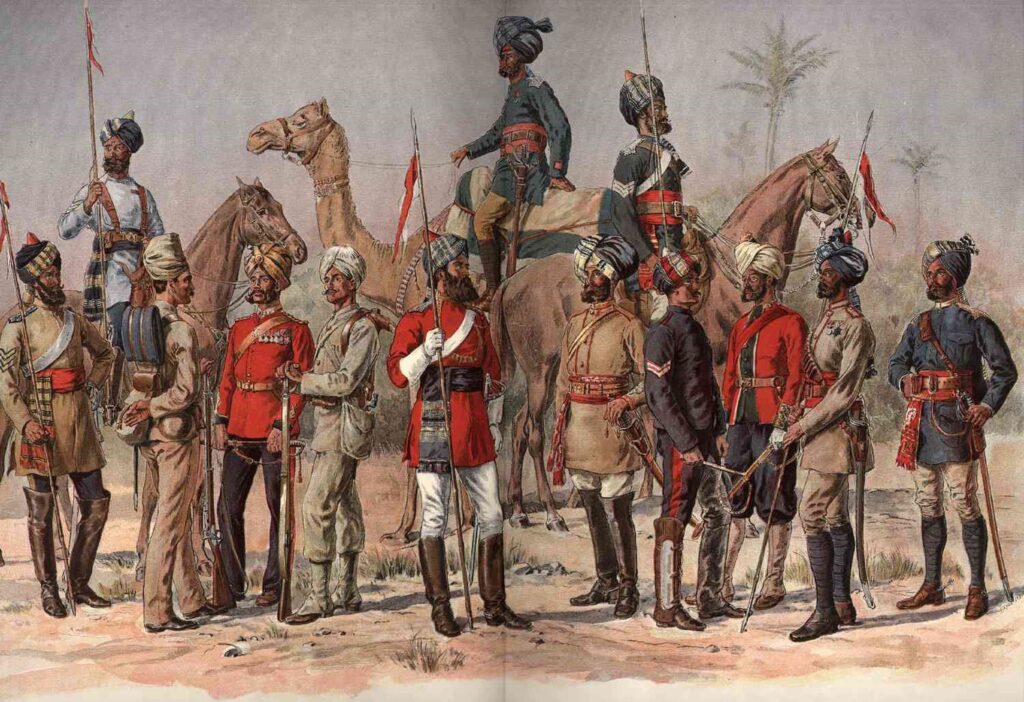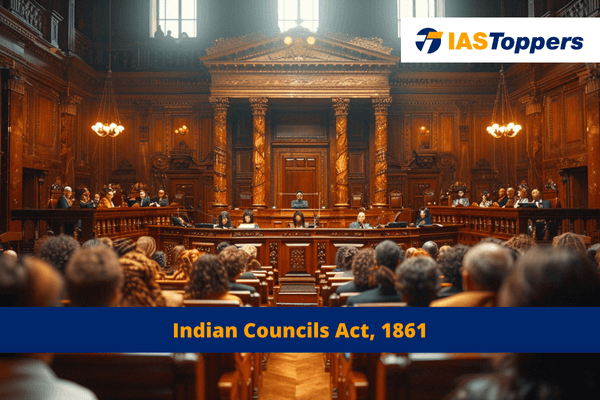The Indian Councils Act, 1861 had made many changes in the governance system of India whose many provisions are still followed in the governance of the country. In this article, you will learn background, features, outcomes for The Indian Councils Act, 1861, providing key insights for GS Paper- I Indian History and the GS Paper-II Polity and Governance of UPSC IAS Exam.
Table of Content
- What is the Indian Councils Act 1861?
- Background of the Indian Councils Act 1861
- Salient features of Indian Councils Act 1861
- Outcomes of the Indian Councils Act of 1861
- Demerits of the Indian Councils Act 1861
- Conclusion
- Frequently Asked Questions
What is the Indian Councils Act 1861?
- The Indian Councils Act 1861 was an act of the British Parliament to make changes in the Governor-General’s Council so as to enhance the representation of Indians in the governance system of India.

Background of the Indian Councils Act 1861:
- The Indian Councils Act 1861 was brought by Britishers in order to avoid the repetition of great revolt of 1857.
- Three acts– 1861, 1892 and 1909 were brought to seek Indian participation in matter of administration.
- The Indian council act of 1861 had begun the representation of Indians in institutions with regards to the law-making process.
- Councils act 1861 had reversed the centralisation of power that had started from the Regulating Act of 1773.
Salient features of Indian Councils Act 1861:
- Legislative council: the Viceroy should nominate some Indians as non-official members of his expanded legislative council.
- The Viceroy could add 6 -12 additional members to the Legislative councils.
- At least half of such additional members must be non-official members who can be either Indian or English.
- Executive council: a jurist was added as a 5th member in Viceroy’s executive council.
- Decentralisation: It decentralised the power vested in the Governor General of India (thede facto IndiaGovernor-General of Bengal) by restoring the legislative powers back to the Bombay and Madras Presidencies.
- Centralisation of this power was done by Regulating Act of 1773.
- New legislative councils: it established new legislative councils for Bengal, North-Western Provinces and Punjab in 1862, 1886 and 1897, respectively.
- Main provisions of the Indian council act 1861 had empowered the Viceroy to make rules and orders to conduct business of the council conveniently.
- Portfolio system: in the ‘portfolio’ system, a member of the Viceroy’s executive council was made in-charge of one or more departments of the Government who can also issue final orders on behalf of the council.
- The ‘portfolio’ system was introduced by Lord Canning in 1859.
- Each branch of the department had its official head and spokesman to conduct the administration.
- Ordinances: it empowered the Viceroy to issue ordinances during an emergency without consultation of the legislative council.
- The Ordinances is applicable only for six months.
Outcomes of the Indian Councils Act of 1861:
- In 1862, the Viceroy Lord Canning had nominated 3 Indians to his legislative council who were- the Raja of Benaras, Sir Dinkar Rao and the Maharaja of Patiala.
- The decentralisation of the legislative power reached its climax when almost complete internal autonomy to the provinces in 1937 were granted.
- Ordinances power vested on the Viceroy in this act became the base of Ordinance power of President and Governance in the Indian Constitution. However, some minute changes were done with laws related to issuance of Ordinances power.
- The portfolio system became the foundations of cabinet government in the Independent India.
Demerits of the Indian Councils Act 1861:
- The legislative councils possessed no real powers and suffered from many weaknesses such as it being merely acting as an Advisory Body.
- The legislative councils cannot discuss many important matters including financial matters without approval of government.
- The legislative councils had no control over budget.
- The assent of the bill passed by the legislative councils required viceroy’s approval, which can even after his assent still be rejected by the secretary of state.
- Indians included in the legislative councils were not representative of the diverse including the weaker section of Indian society.
- Many of them were chosen on the basis of their loyalty to the British Crown.
- The legislative councils could not discuss executive actions as executive were not made accountable to the legislative councils.
Conclusion
Though the features of the Indian Councils Act 1861 such as Ordinance making power was adopted by the Constitution of independent India, the Act failed to grant Indian any de facto power and was rather seen by Indian as a Safety Valve to release the Indian pressure with regards to self–governance. It was brought with the intention to avoid the repetition of the revolt of 1857 and not to give Indians any official power
Ref: Source-1
| Other Articles in History & Culture | |
| Charter Act Of 1813 | Government of India Act 1919 |
| Vernacular Press Act 1878 | Subsidiary Alliance System |
| Poona Pact (1932) | Permanent Settlement System |
FAQs (Frequently Asked Questions)
What are the key features of the Indian council act 1861?
The Indian council act 1861 features includes expanding legislative council to include Indians, decentralisation of the power, introduction of the portfolio system and the Ordinance issuing power.
What are the merits and demerits of Indian Councils Act 1861?
The Indian Councils Act 1861 merits and demerits includes: Indian were also included in the law making process however they have no real powers as they cannot discuss on financial matters or cannot control budget.
What is the difference between Indian Councils Act 1861 and 1892?
The Indian Councils Act 1861 did not empowered the Indian legislators to question on financial matters or budget whereas The Indian Councils Act 1892 allowed legislative members the right to ask questions related to finance and budget.
What is the importance of Indian Councils Act 1861?
The Ordinance issuing power introduced through this act was also adopted by the Indian Constitution. The portfolio system laid the foundations of cabinet government in the Independent India.
.What were the main points of the Indian Council Act of 1861?
Indian Council Act of 1861 made the beginning of representative institutions by associating Indians with the law-making process.


